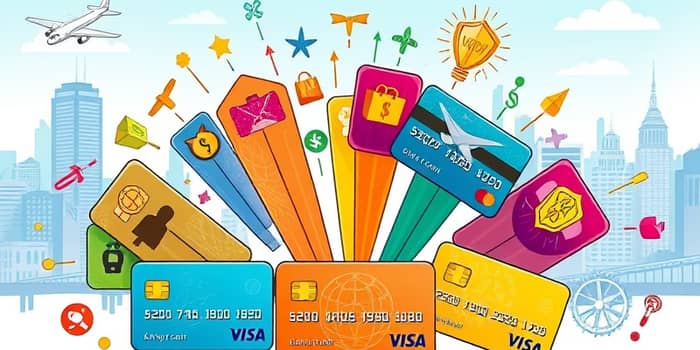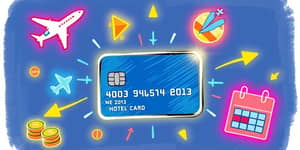
In a world increasingly untethered from physical cash, payment cards have evolved into powerful tools that offer far more than simple transaction capabilities.
The journey from a plastic card with a magnetic stripe to a digital-first lifestyle platform has reshaped how we shop, travel, and even perceive value itself.
What began as a convenient alternative to carrying bills has transformed into a seamless blend of finance and experience.
Today, more than 800 million credit cards circulate in the United States alone, and contactless transactions account for half of all in-person payments worldwide.
Modern cards integrate with mobile wallets, loyalty programs, and digital ecosystems, giving users real-time insights and personalized offers at their fingertips.
Generational shifts also play a pivotal role: Gen Z and Millennials are not only adopting cards at unprecedented rates but also seeking cards that align with their values, such as sustainability-linked rewards and charitable donation options. This holistic approach to spending and giving underscores a broader transformation in consumer priorities.
Rewards have become the cornerstone of cardholder engagement. In 2022, U.S. consumers earned $41.1 billion in rewards, split between cash back ($15.2 billion), airline miles ($5.2 billion), and points for travel, gift cards, or merchandise.
Average rewards value stands at 1.6 cents per dollar spent, and the typical sign-up bonus has climbed to $326, reflecting fierce competition among issuers.
Redemption rates are impressive: $34.5 billion in rewards were redeemed last year, though approximately $500 million expired due to account closures or lapses.
Successful strategies often involve channeling spend into high-yield categories, timing bonus offers to align with large purchases, and leveraging transfer partners for enhanced travel redemptions.
Ultimately, optimizing rewards requires both strategic planning and disciplined spending, ensuring that the card serves as a catalyst for greater financial flexibility rather than a debt trap.
Beyond dollars and cents, points serve as an emotional reward mechanism for consumers, driving engagement through gamified challenges and limited-time promotions. Issuers increasingly partner with popular brands to offer tiered bonus categories, cultivating a sense of exclusivity and increasing cardholder retention.
Beyond points and cash back, cardholders enjoy a spectrum of value-added perks designed to enhance lifestyles and safeguard purchases.
While these perks can be difficult to quantify, they often tip the scales when choosing between premium card offerings, especially for frequent travelers and high-spenders seeking exclusive lifestyle enhancements.
For frequent travelers, premium cards can mean access to more than 1,300 airport lounges worldwide, complimentary elite hotel status, and even invitations to exclusive events. These intangible benefits often justify annual fees that might exceed $500, as they deliver tangible upgrades to the travel experience.
Digital wallets are on track to reach nearly 5 billion users by 2025, and contactless payments now represent 50% of global point-of-sale transactions.
Leading platforms such as Apple Pay, with over 239 million active users, have become integral to modern commerce, offering both speed and security.
These developments demonstrate how cutting-edge technology fosters trust and convenience, making card-based payments more appealing than ever before.
While buy-now-pay-later options have gained traction, credit cards remain the dominant financing tool, favored by 83% of consumers for larger purchases due to their flexibility and superior fraud protection. Integration between BNPL and card networks is emerging, further solidifying the card’s role in diverse payment landscapes.
Despite their numerous advantages, credit cards come with costs. As of early 2025, average APRs hover around 21.91%, rising to 24.33% for new card offers.
Younger consumers, particularly those aged 18–34, often chase rewards but may struggle with paying balances in full, leading to higher default rates.
Regularly reviewing your card’s terms and conditions can uncover valuable perks you may be overlooking, such as accelerated earning on rotating categories or statement credit offers. Taking advantage of targeted promotions can boost your rewards earnings by significant incremental percentages each month.
Armed with clear spending habits and regular payment routines, cardholders can unlock full benefits while minimizing costly interest charges.
One of the most compelling advantages of modern cards is their robust fraud protection framework.
Zero-liability policies ensure that consumers are not held responsible for unauthorized charges, while real-time alerts and dispute resolution options empower users to act swiftly when suspicious activity arises.
Additionally, many cards provide travel insurance, emergency card replacement, and rental car coverage, offering peace of mind in unforeseen circumstances.
Advanced security measures, including EMV chip technology and biometric authentication in mobile wallets, raise the bar for transaction safety. Tokenization replaces sensitive card data with unique identifiers, drastically reducing fraud exposure and reinforcing consumer confidence in digital payments.
These layers of protection underscore how cards have become a critical line of defense for financial security, outperforming traditional payment methods in risk mitigation.
The modern payment card transcends its original purpose as a simple medium of exchange. It has evolved into a dynamic ecosystem that rewards loyalty, enhances lifestyles, and safeguards consumers.
From aspirational points that unlock dream travel experiences to digital innovations that streamline every purchase, cards offer a multifaceted value proposition.
By understanding the diverse perks available, harnessing rewards strategically, and practicing responsible credit management, consumers can transform their cards into powerful allies in both everyday spending and long-term financial planning.
In the era of digital finance, payment cards stand as more than just a way to move money—they represent gateways to opportunity, convenience, and protection unlike any other.
References













